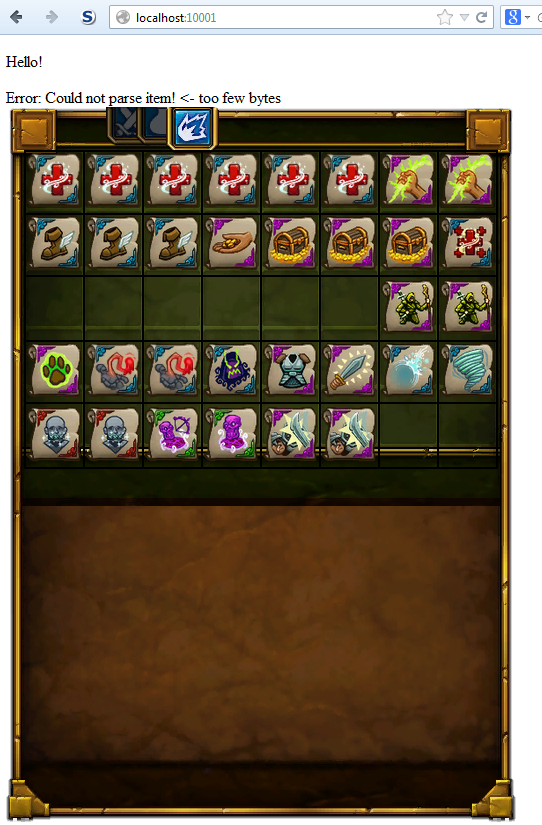A lot of cool news to report on FNIStash!
After successfully pulling png icons out of the TL2 game data, the next step was to get a GUI going. As I’ve written about previously, GUIs on Haskell (especially windows) are a PITA. However, after doing a clean reinstall of Haskell Platform, I was able to successfully install Ji and build the example executables.
What is Ji?
The GUI landscape on Haskell is pretty bad. There are lots of frameworks out there, but actually installing them (much less using them) is often a big pain. There really hasn’t been much effort lately to make these frameworks more user friendly.
Where does Haskell get a lot of attention? The Web. Ji is a package that takes advantage of this web attention by turning your web browser into desktop GUI. You control the browser GUI from your Haskell application with commands to add elements, handle events, etc. Ji achieves this by running a Javascript library on your page that transparently communicates with the Haskell server using JSON to execute commands and send event notifications. The low latency of a desktop connection to itself makes this feasible, but technically Ji could be used for web apps that have a sufficiently fast connection (probably not a good idea, though). It’s all automatic and requires very little set up.
For FNIStash, I needed to expand on the Ji package by enabling assignment of element IDs and lookups thereof. I found that most of the infrastructure for this was already there but unused, which made adding the functionality pretty easy once I figured out how the package worked. The updates went into Ji earlier this morning, but Ji’s creator, Chris Done, has other things on his plate and wanted to unload responsibility for the package. Heinrich Apfelmus, of reactive-banana FRP fame, volunteered to take the project over with my assistance. That transition is still in the works.
Ok, so FNIStash…
I recently discovered how TL2 stores the location information for items. There is a hierarchical system of containers, slots, and indices, each of which has an ID to keep track of it all. From a raw item binary, I now know where that item is among TL2’s various item containers. The result?
This is a working shared stash display, albeit unpolished. Each item is inserted into the emulated stash in its same position just like the game. The selection tabs at the top work, so clicking on a different tab changes the class of items that are displayed. Ji handles this all over the wire, although I admit is was a little tricky getting the click event handler written.
The error at the top indicates that there are some items in this shared stash file that I am not parsing correctly. It’s true that there are cases my parsing logic doesn’t currently handle, mainly because I don’t understand the file format entirely. For the time being, handling most cases is sufficient for moving development forward.
It’s actually starting to look like a real, genuine desktop app. I’m excited!
